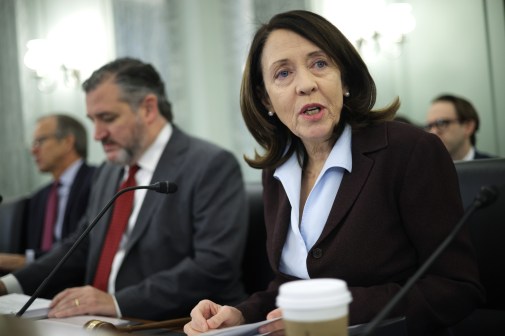2018 in review: Government leadership can’t get enough AI

The federal government just can’t seem to get enough artificial intelligence.
Whether because of the looming specter of competition from China, or the many and varied concerns about the protection of civil liberties in an automated world, few weeks went by this year without some discussion, somewhere in Washington, about the use, development or challenges associated with the technology.
The legislative and executive branches were not exempt from the mania — at the White House and on Capitol Hill actions circled around two primary questions. First: How can we develop more capacity, both in the government and in the country writ large, for the development of AI technologies? And second: How, if at all, do we plan to regulate these new technologies?
At 1600 Pennsylvania Ave.
The White House has made the most noise about the first of these questions — setting up committees and issuing memos and generally advocating for increased government research and development funding for AI as a way to ensure that the country maintains technical dominance.
For example, the administration announced the creation of a Select Committee on Artificial Intelligence in May, a group that seeks to “improve the coordination of Federal efforts related to AI to ensure continued U.S. leadership in this field.” The committee set to work in September on its first task — updating the National Artificial Intelligence Research and Development Strategic Plan.
Meanwhile, the White House Office of Science and Technology Policy has been pushing for coordination of efforts beyond the boundaries of the federal government too. Specifically, Deputy CTO Michael Kratsios has argued that public-private partnerships are the key to the U.S.’s competitive advantage in this field.
“As artificial intelligence transforms everything from agriculture to manufacturing to transportation, the potential for AI remains breathtaking,” Kratsios said in his remarks at the White House summit in May. “But we cannot be passive. To realize the full potential of AI for the American people, it will require the combined efforts of industry, academia, and government.”
Additionally, in July, the White House indicated via memo that AI is among its top eight research and development budgeting priorities for 2020.
But the administration does have a perspective on the second question, that of regulation, as well. A meeting of stakeholders from industry, academia and government convened in May to discuss a wide range of issues relating to AI, including the question of how to remove barriers to innovation. On this point, OSTP has advocated for a cautious approach to regulation. “The White House is committed to removing unnecessary regulatory burdens on emerging technologies and promoting the safe deployment of these technologies,” Kratsios said at an event in April. “Overregulation can kill a nascent technology before it ever has the chance to fuel economic growth or create new jobs.”
Meanwhile, on Capitol Hill
There was a lot of conversation on Capitol Hill this year about what a national strategy around AI might look like, and what role Congress might play in the development of such a strategy.
“Very similar to the way the United States kind of responded to Sputnik with kind of a national strategy around building the space program… I think that would be very, very useful right now,” Rep. John Delaney, D-Md., said while on a panel in July.
Soon after this, in September, Reps. Will Hurd, R-Texas, and Robin Kelly, D-Ill., joined the call for an AI national strategy. A coordinated push like this would include both the R&D investment desired by the White House and some kind of ethics framework, they suggested. “Part of that strategy needs to include increasing basic research, opening up data sets and making sure the United States is playing a part in the leadership on ethics when it comes to artificial intelligence, especially around bias,” Hurd said.
In early December the Center for Data Innovation expressed its support for an AI national strategy and presented Congress with its suggestions for what such a strategy should look like.
Above and beyond this, however, the legislative branch found itself faced with some more vexing questions on AI this year — questions about how we, as a government and as a society, intend to define fair use of the powerful computer-driven capabilities that AI makes possible.
The American Civil Liberties Union forced the issue in July with a study that put sitting members of Congress in the crosshairs of misidentification by facial recognition technology. Using Amazon’s Rekognition software, the group compared a photoset of sitting members of Congress to a database of publicly available arrest photos. The software, according to ACLU, incorrectly identified 28 sitting members of Congress as individuals who have been arrested. Lawmakers, predictably, had some questions.
But while lawmakers may be able to compel tech CEOs to answer for their creations, there are no easy answers to the more philosophical questions of ethics. These more fundamental questions, one imagines, will continue to be the subject of argument, discussion and compromise, into 2019 and beyond.




